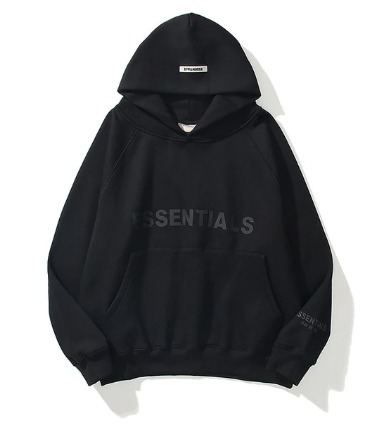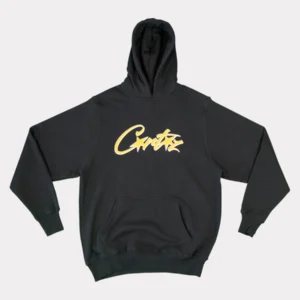1. The Shift Towards Comfort-First Fashion
The fashion industry has seen a significant shift towards comfort-focused clothing, driven by changing lifestyles and consumer preferences. With the rise of remote work, the need for comfortable, yet presentable clothing has skyrocketed. People are no longer willing to sacrifice comfort for style; instead, they seek garments that offer both. This trend has led to a resurgence of timeless essentials like sweatpants, hoodies, and relaxed-fit jeans, reimagined with modern twists to meet the demands of today’s consumers.
2. The Influence of Athleisure
Athleisure has played a pivotal role in this comfort revolution. Blurring the lines between athletic wear and casual clothing, athleisure has made it acceptable to wear comfortable, functional pieces outside the gym. Leggings, joggers, and performance fabrics have become everyday staples, offering the ease of movement and all-day comfort that traditional clothing often lacks. This fusion of style and practicality has set a new standard in fashion, where comfort is no longer just a bonus but a necessity.
3. The Rise of Loungewear
The popularity of loungewear Essentials Hoodie has further cemented comfort’s place in the fashion world. Once reserved for lazy weekends at home, loungewear has become a category of its own, with brands creating chic, comfortable pieces that are suitable for both lounging and stepping out. Matching lounge sets, soft knitwear, and oversized cardigans are now go-to options for those who want to feel cozy without compromising on style.
What Makes Clothing Comfortable?
1. Fabric Choices
The foundation of any comfortable garment lies in the fabric. Natural fibers like cotton, wool, and linen are often preferred for their breathability, softness, and ability to regulate body temperature. Cotton, especially organic cotton, is a favorite for t-shirts, underwear, and sleepwear because of its softness and moisture-wicking properties. Wool, particularly merino wool, is prized for its warmth, breathability, and natural elasticity, making it ideal for sweaters and outerwear. Linen, known for its lightweight and breathable nature, is perfect for warm weather clothing.
In addition to natural fibers, modern textiles like modal, Tencel, and bamboo offer a silky feel and sustainable production processes, further enhancing the comfort of everyday essentials. These fabrics are not only soft against the skin but also durable and environmentally friendly, making them excellent choices for those who prioritize both comfort and sustainability.
2. The Importance of Fit
No matter how soft or high-quality the fabric, a garment won’t be truly comfortable if it doesn’t fit well. The right fit ensures that clothing moves with your body, providing ease of movement without constriction. This is particularly important for pieces like jeans, blazers, and dresses, where a good fit can make the difference between a piece that you love to wear and one that stays in the back of your closet.
Comfortable clothing should be tailored to your body shape, offering enough room for movement without being overly baggy. Stretch fabrics, adjustable waistbands, and strategically placed seams all contribute to a better fit and increased comfort. The goal is to create garments that feel as good as they look, allowing you to go about your day without constantly adjusting or fidgeting with your clothes.
3. Construction and Craftsmanship
The way a garment is constructed plays a significant role in its comfort level. High-quality stitching, smooth seams, and thoughtful design details all contribute to a piece that feels comfortable to wear. For example, flat seams can prevent chafing, while properly finished edges ensure that a garment doesn’t irritate the skin. The placement of pockets, the type of zippers or buttons used, and even the length of a garment can all impact how comfortable it is to wear.
Brands that focus on craftsmanship often invest in these details, resulting in clothing that not only looks polished but feels good against the skin. Investing in well-made essentials means you’re more likely to reach for these pieces again and again, as they provide a level of comfort that fast fashion often lacks.
Essentials that Prioritize Comfort
1. The Soft Knit Sweater
A soft knit sweater is the epitome of comfort. Made from materials like cashmere, merino wool, or even cotton blends, a well-crafted sweater provides warmth and softness without being bulky. Look for sweaters with a relaxed fit, ribbed cuffs, and a slightly longer length to ensure maximum coziness. Whether layered over a t-shirt or worn on its own, a soft knit sweater is a versatile piece that can be dressed up or down, making it a must-have in any comfort-focused wardrobe.
2. The Perfect Pair of Jeans
Jeans are a wardrobe staple, but finding a pair that offers both style and comfort can be challenging. The perfect pair of jeans should fit well at the waist, hips, and thighs, with just enough stretch to allow for ease of movement. High-rise or mid-rise styles often provide the best balance of comfort and support, while a tapered or straight leg offers a flattering silhouette that can be dressed up or down. Denim blends that include a small percentage of elastane or spandex can enhance comfort without sacrificing the classic look and feel of jeans.
3. The Relaxed Tee
The t-shirt is perhaps the most essential of all wardrobe basics, and its comfort level is crucial. A relaxed tee made from high-quality cotton or a cotton blend offers breathability, softness, and a flattering drape. The fit should be relaxed but not oversized, with a neckline that suits your style—whether it’s a classic crew neck, a casual V-neck, or a trendy scoop neck. A well-made t-shirt is endlessly versatile, pairing effortlessly with jeans, skirts, or under blazers for a more polished look.
4. The Cozy Loungewear Set
A cozy loungewear set is the ultimate in comfort. Typically made from soft, stretchy materials like jersey, fleece, or ribbed knit, these sets are designed for relaxation without sacrificing style. Look for matching tops and bottoms in neutral colors or subtle patterns for a cohesive look that can be worn both at home and out for casual errands. Elastic waistbands, drawstring closures, and relaxed fits ensure that these pieces move with you, providing all-day comfort.
5. The Versatile Hoodie
The hoodie has evolved from athletic wear to a fashion essential that embodies comfort. Today’s hoodies are crafted from premium materials like organic cotton, French terry, or brushed fleece, offering softness and warmth without being too heavy. A well-made hoodie should have a flattering fit, with ribbed cuffs and hems to keep the shape intact. The hood itself should be functional, providing protection from the elements without feeling bulky. Whether layered under a jacket or worn on its own, the hoodie is a go-to piece for comfort and style.
Building a Wardrobe Around Comfort
1. Prioritizing Versatility
When building a wardrobe focused on comfort, versatility is key. Choose pieces that can be easily mixed and matched, allowing you to create multiple outfits with minimal effort. Neutral colors like black, white, gray, navy, and beige are excellent choices for a comfort-focused wardrobe, as they can be paired with almost anything. Opt for classic silhouettes that transcend trends, ensuring that your essentials remain stylish and relevant season after season.
2. Layering for All-Season Comfort
Layering is an effective way to achieve comfort in any season. Start with a base layer like a soft tee or tank top, add a cozy sweater or hoodie, and finish with a lightweight jacket or coat for warmth. This approach allows you to adapt to changing temperatures throughout the day, ensuring that you stay comfortable no matter the weather. Layering also adds dimension to your outfits, giving you the flexibility to dress up or down depending on the occasion.
3. Investing in Quality Over Quantity
A comfort-focused wardrobe should prioritize quality over quantity. Investing in well-made pieces may cost more upfront, but these garments are likely to last longer, feel better, and maintain their appearance over time. High-quality fabrics, thoughtful construction, and timeless designs ensure that your essentials remain comfortable and stylish for years to come. Instead of filling your closet with fast fashion, focus on curating a collection of essentials that truly enhance your comfort and style.
Conclusion: Comfort as a Fashion Essential
The growing emphasis on Black Essentials Hoodie comfort in fashion reflects a broader shift in how we approach our wardrobes. Today, clothing is not just about making a statement or following the latest trends—it’s about feeling good in what we wear. Essentials that prioritize comfort in every stitch are more than just wardrobe basics; they are the foundation of a lifestyle that values well-being, ease, and style.
As you curate your wardrobe, remember that comfort is not a compromise—it’s a necessity. By choosing pieces that offer comfort in fabric, fit, and construction, you can build a wardrobe that not only looks great but feels great too. In the end, comfort is the key to a truly satisfying and sustainable approach to fashion, ensuring that you feel your best every day.



